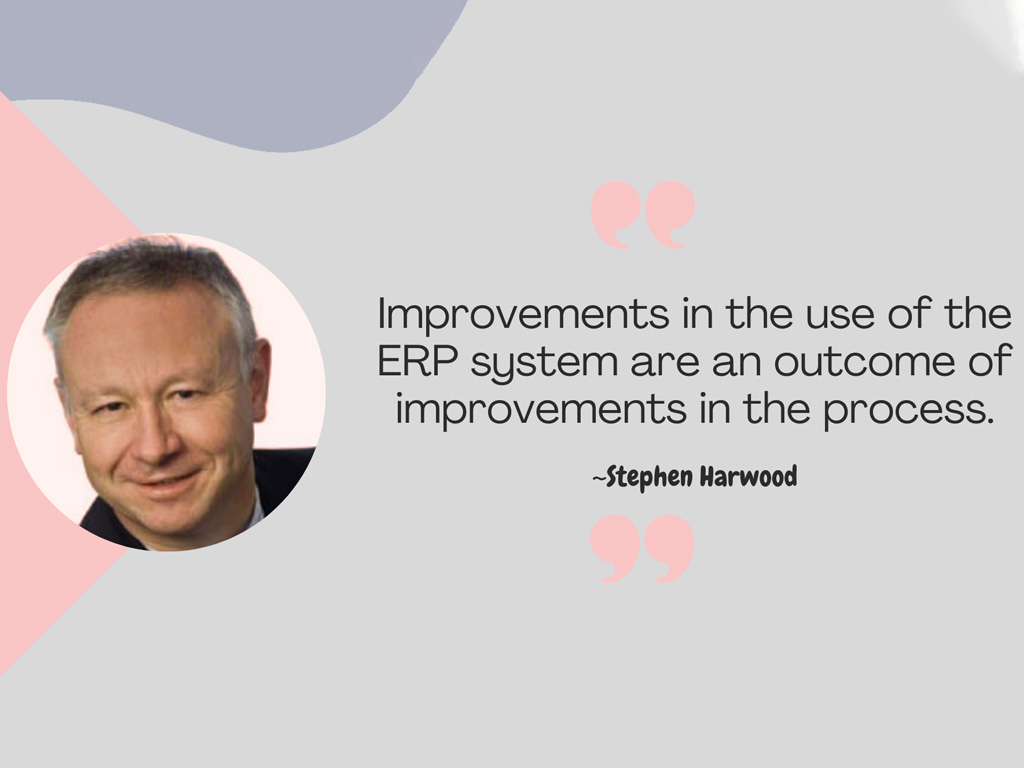Table of Contents
Introduction
NetSuite is a comprehensive software solution for Enterprise Resource Planning (ERP). As the corporate landscape becomes more competitive, businesses need advanced technologies like ERP systems and dependable cloud services to manage their operations successfully.
NetSuite, a cloud-based ERP system from Oracle, is an excellent tool for managing various business functions such as accounting and billing, inventory management, order processing, supply chain management, and planning.
Implementing an ERP system can be complex and may impact several business areas. As with any major project, having a well-thought-out implementation plan is crucial for success; this plan breaks the implementation process into distinct phases with specific objectives to ensure the best possible outcome.
Understanding the Basics of ERP and NetSuite
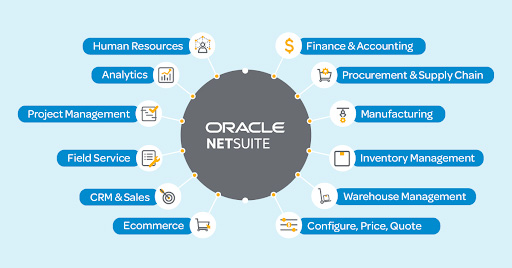
Enterprise Resource Planning (ERP) systems integrate core business processes like finance, inventory management, human resources, and customer relationship management into a single platform.
This unified approach improves efficiency, reduces data silos, and allows businesses to make data-driven decisions. By automating routine processes, ERP solutions enhance operational productivity and ensure smooth collaboration across departments.
NetSuite ERP: Key Features and Benefits
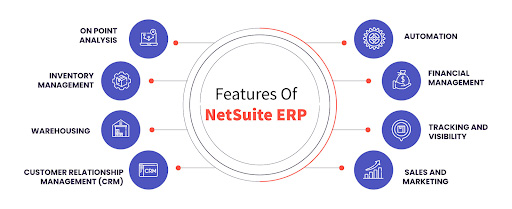
NetSuite ERP is a cloud-based solution that streamlines business operations by managing one platform’s financials, supply chain, customer data, and eCommerce activities. Key benefits of NetSuite include:
- Real-Time Reporting: Access to real-time analytics for better decision-making.
- Scalability: Supports business growth by scaling with your operations.
- Cloud Accessibility: Provides secure, anytime access from any location.
- Customization: Adapts to industry-specific needs with configurable modules.
- Automation: Automates routine tasks like invoicing, order management, and payroll, reducing errors and saving time.
Preparing for NetSuite ERP Implementation
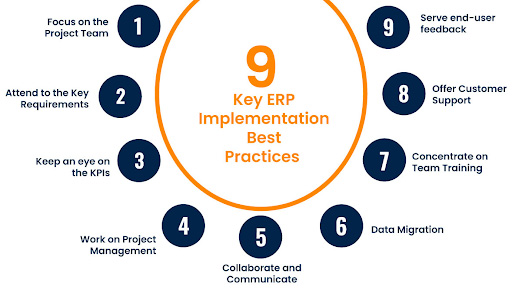
Setting Clear Objectives and Business Goals
The first step to a successful NetSuite ERP implementation is defining what the business wants to achieve. Whether it’s improving financial visibility, streamlining operations, or enhancing customer service, having clear goals ensures alignment among stakeholders and guides decision-making throughout the project.
Building an Implementation Team: Key Roles to Include
A dedicated implementation team is essential for smooth execution. This team should include:
- Project Manager: Oversees timelines, budgets, and communication.
- Subject Matter Experts (SMEs): Provide input on business requirements and workflows.
- IT and Technical Support: Handle system configurations and data migration.
- External Consultants/NetSuite Partner: Offer expertise and guide complex integrations.
Step-by-Step NetSuite ERP Implementation Process
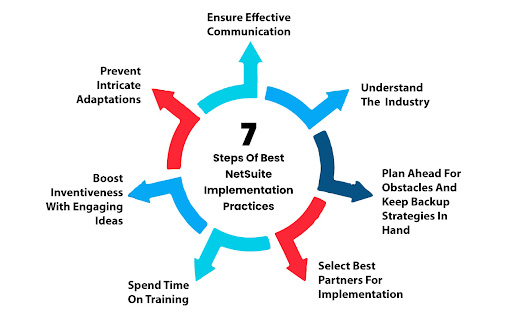
Step 1: Project Planning and Initial Setup
- The implementation starts with project planning, where goals, timelines, and responsibilities are finalized.
- NetSuite is configured with the basic company settings, including user roles, permissions, and security protocols.
Step 2: System Configuration and Customization
- NetSuite modules are configured to align with your business processes.
- Custom workflows, dashboards, and reports are created based on specific business needs.
- Integration with other systems (like CRM, eCommerce, or POS) is set up to ensure seamless data flow.
Step 3: Data Migration and Validation
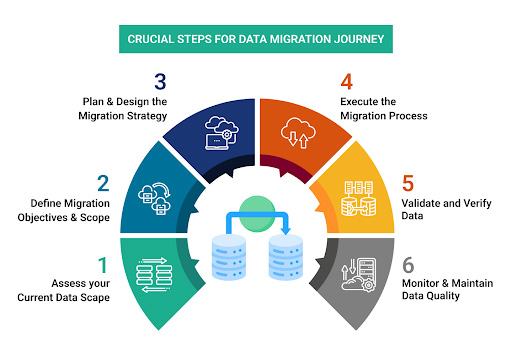
- Data from legacy systems is migrated into NetSuite, following a predefined roadmap.
- Once transferred, the data is validated to ensure its accuracy and integrity.
- Parallel testing is conducted to compare the new system’s outputs with the old ones.
Step 4: User Training and Onboarding
- End-users are trained to use NetSuite effectively through workshops, guides, and hands-on practice.
- Role-based training ensures each department understands how to leverage relevant features.
- A dedicated help desk or point of contact is established for quick support during the onboarding phase.
Step 5: Testing the System – UAT (User Acceptance Testing)
- Before going live, the system undergoes User Acceptance Testing (UAT) to confirm it performs as expected.
- Stakeholders and key users validate that all processes and reports function correctly.
- Any issues identified during testing are resolved before launch.
Step 6: Go Live – Transition to the New System
- On the scheduled go-live date, operations shift entirely to NetSuite ERP.
- Users begin working within the new environment, with support available to address any initial hiccups.
- A contingency plan is in place to revert to old processes if critical issues arise.
Post-Implementation Phase: Stabilizing and Optimizing
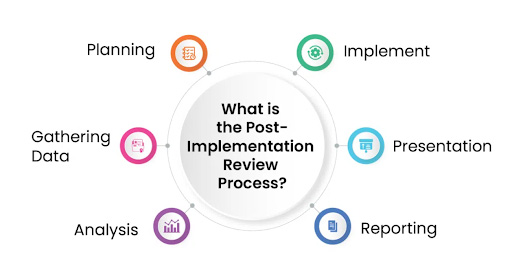
Monitoring Performance and Fixing Initial Issues
- During the stabilization phase, the system’s performance is monitored closely for any bottlenecks or issues.
- Bugs, errors, or process gaps identified post-launch are promptly addressed.
- Regular feedback from end-users helps refine workflows and enhance usability.
Continuous User Support and Troubleshooting
- A support structure is established to handle user queries and resolve technical issues.
- Ongoing training sessions and refresher courses ensure users stay proficient with the system.
- Access to NetSuite’s online community and customer support resources offers additional assistance.
Leveraging NetSuite’s Reporting and Analytics Features
- Businesses begin leveraging real-time reporting and analytics for data-driven decision-making.
- Custom reports are developed to track key performance indicators (KPIs) and financial metrics.
- Dashboards provide executives with insights into business performance at a glance.
Overcoming Common Challenges During Implementation
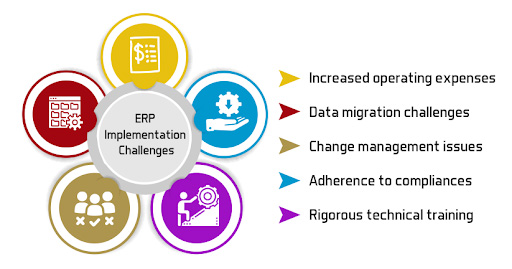
Handling Resistance to Change: Ensuring Employee Buy-In
- Employees may resist adopting new processes and technologies, fearing disruption or job insecurity.
- To mitigate resistance, involve key stakeholders early in the process and communicate the benefits of NetSuite.
- Offering incentives and continuous training helps foster a positive mindset toward the transition.
Managing Timeline Delays and Scope Creep
- Implementation timelines can be delayed due to unforeseen issues or expanding project scope.
- To stay on track, create a realistic project plan with buffer time for unexpected challenges.
- Establish clear boundaries for scope and use a change management process to handle new requirements efficiently.
Ensuring Data Accuracy and Security
- Poor data quality can undermine the effectiveness of the new system, leading to operational inefficiencies.
- Thorough data validation and cleansing during the migration phase minimize the risk of errors.
- Implementing robust security protocols protects sensitive data from breaches and ensures compliance with regulations.
Best Practices for a Smooth NetSuite ERP Implementation
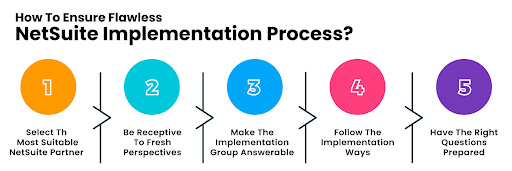
Involve Stakeholders Early in the Process
- Engage key stakeholders from various departments during the planning phase to ensure their needs are addressed.
- Regular communication with stakeholders promotes alignment and minimizes resistance to change.
Conduct Thorough Planning and Documentation
- Develop a detailed project plan, including timelines, milestones, and responsibilities for each phase.
- Maintain thorough documentation for configurations, workflows, and training materials to support future updates and troubleshooting.
Focus on Training and Change Management
- Provide comprehensive, role-specific training to users before the go-live date.
- Use change management strategies, such as workshops and continuous communication, to ease the transition.
Partner with Experienced Consultants
- Collaborate with NetSuite implementation partners or consultants who have industry-specific expertise.
- Consultants can guide configuration, customization, and troubleshooting to ensure a seamless deployment.
Monitor and Adjust During the Stabilization Period
- Actively monitor system performance in the early stages to identify and resolve issues promptly.
- Encourage feedback from users to optimize workflows and enhance the user experience.
Measuring Success: KPIs to Track Post-Implementation
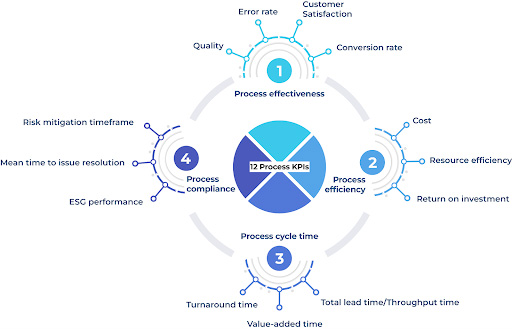
System Adoption Rates
- Measure how quickly and effectively employees are using the new system by tracking login frequency and module usage.
- High adoption rates indicate that users are comfortable with the new platform and leveraging its features effectively.
Operational Efficiency Improvements
- Track the reduction in manual tasks, process delays, and errors through automation.
- KPIs such as order fulfillment time, invoice processing speed, and inventory turnover rate reflect efficiency gains.
Business Growth and Scalability Indicators
- Measure business growth KPIs, such as sales revenue, market expansion, and new customer acquisition, post-implementation.
- Successful ERP implementation should support scalability and drive sustainable growth.
Return on Investment (ROI) and Cost Savings
- Calculate the ROI by comparing implementation costs with benefits, such as reduced operational expenses and increased revenue.
- Monitor cost savings achieved through optimized inventory management, reduced labor, and improved efficiency.
By following these best practices and tracking relevant KPIs, businesses can ensure a successful NetSuite ERP implementation and continuously optimize the system to support long-term growth and success.
Future Trends: The Evolution of NetSuite ERP
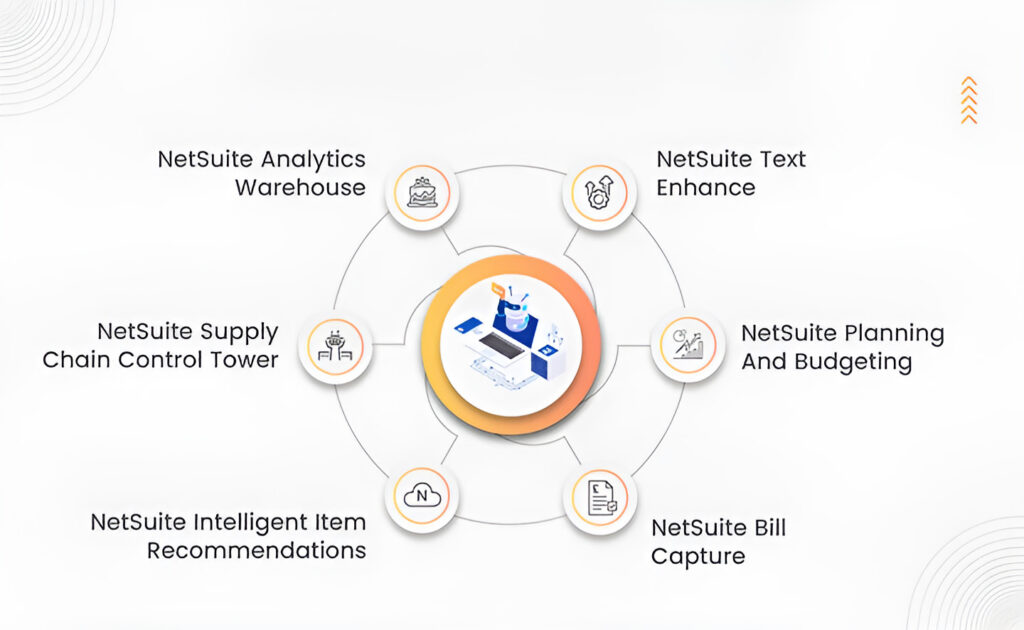
Enhanced AI and Machine Learning Integration
- NetSuite is increasingly incorporating AI and machine learning to automate repetitive tasks and provide predictive insights.
- Features like automated forecasting, anomaly detection, and personalized recommendations will empower businesses to stay ahead of market trends.
Expansion of Industry-Specific Solutions
- NetSuite is diversifying its ERP solutions to cater to industry-specific needs, such as manufacturing, healthcare, and professional services.
- These tailored modules reduce customization efforts and provide pre-configured tools to meet the unique requirements of various industries.
Integration with IoT and Emerging Technologies
- The Internet of Things (IoT) will become more prominent, with NetSuite facilitating data exchange between connected devices and the ERP system.
- Emerging technologies like blockchain and RPA (Robotic Process Automation) may also be integrated to enhance security and efficiency.
Conclusion
NetSuite ERP has become a vital tool for businesses looking to streamline operations, enhance productivity, and drive growth. Implementing NetSuite is a multi-step process that requires careful planning, thorough training, and ongoing support. With proper execution, businesses can unlock significant benefits, from improved financial management to seamless supply chain operations.
Whether you’re just beginning your NetSuite ERP journey or refining your current system, staying informed and adaptable will be key to maximizing the value of your investment. Now is the time to take the next step and explore how NetSuite ERP can revolutionize your business operations.
Deepak Wadhwani has over 20 years experience in software/wireless technologies. He has worked with Fortune 500 companies including Intuit, ESRI, Qualcomm, Sprint, Verizon, Vodafone, Nortel, Microsoft and Oracle in over 60 countries. Deepak has worked on Internet marketing projects in San Diego, Los Angeles, Orange Country, Denver, Nashville, Kansas City, New York, San Francisco and Huntsville. Deepak has been a founder of technology Startups for one of the first Cityguides, yellow pages online and web based enterprise solutions. He is an internet marketing and technology expert & co-founder for a San Diego Internet marketing company.

